In the world of visual storytelling, understanding negative and positive space in photography is fundamental to creating balanced, powerful, and emotionally resonant images. Originating from the classic principles of negative and positive space art, these concepts help photographers guide the viewer's eye, create contrast, evoke emotion, and deliver intense compositions.
This guide dives deep into the definitions, emotional impacts, usage tips, and even technical help for improving negative space photography. Whether you're shooting portraits or landscapes, knowing how to manage positive and negative space design can transform your work from ordinary to extraordinary.
In this article
Part 1. What is Positive & Negative Space?
Negative and positive space are foundational principles in both visual art and photography, working together to shape how we interpret an image. Understanding how to use them can significantly improve your compositions and storytelling through visuals.
Definition

These concepts are not new—they have deep roots in classical art practices such as positive and negative space drawing, used to train the eye to recognize shape, balance, and contrast. Artists like M.C. Escher were masters of negative and positive space art, transforming empty spaces into intricate positive negative artwork. His work reveals how negative and positive shapes interplay to manipulate perception and reveal dual meanings.
Emotional Impact

In many examples of negative space in photography, this minimalism offers calm, clarity, or isolation. A negative space portrait, where a person is placed off-center against a plain background, can convey introspection, tension, or even serenity. These are classic negative space in photography examples used to amplify emotion.
Think of a negative space photo not as lacking something, but as being full of potential. Just like in positive and negative space art examples, the deliberate use of space can change how the viewer feels—making your photos not just images, but emotional experiences.
Part 2. Usage and Effects of Positive & Negative Space in Photography
Understanding the usage and effects of negative and positive space in photography allows photographers to create compelling compositions that evoke emotion and draw attention with precision. These spaces are not just about what's in the frame but how what's in the frame interacts with what surrounds it.
Balance and Composition
In negative space composition, every inch of empty space has a purpose. It's not blank; it's deliberate. When used thoughtfully, it brings structure, hierarchy, and balance to an image. Positive space photography benefits greatly from a well-controlled negative space, allowing the subject to shine without distraction.
For instance, a perfectly executed positive and negative artwork creates either harmony through symmetry or dynamic tension through asymmetry. The message shifts depending on how you distribute these visual elements:

These principles are found across disciplines, including positive negative design and positive and negative space design, emphasizing how universal the concept is in visual storytelling.
Mood and Emotion
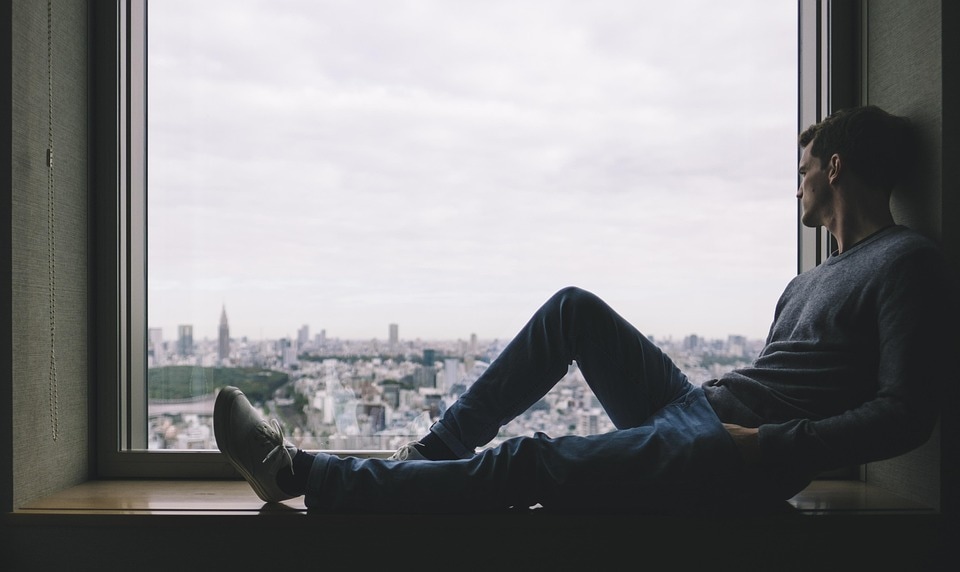
Conversely, minimal negative space—where the subject dominates—can evoke intimacy, tension, or urgency. This mirrors traditional techniques in art positive and negative drawing, where the balance of space dictates the tone and emotion of the piece.
Think of a lone figure walking along a horizon—a classic negative space photo. Or a tightly framed face in shadow—a study in emotional density using limited negative space.
Clarity and Focus
Minimalist photography thrives on this principle. Here are some iconic positive and negative space examples:
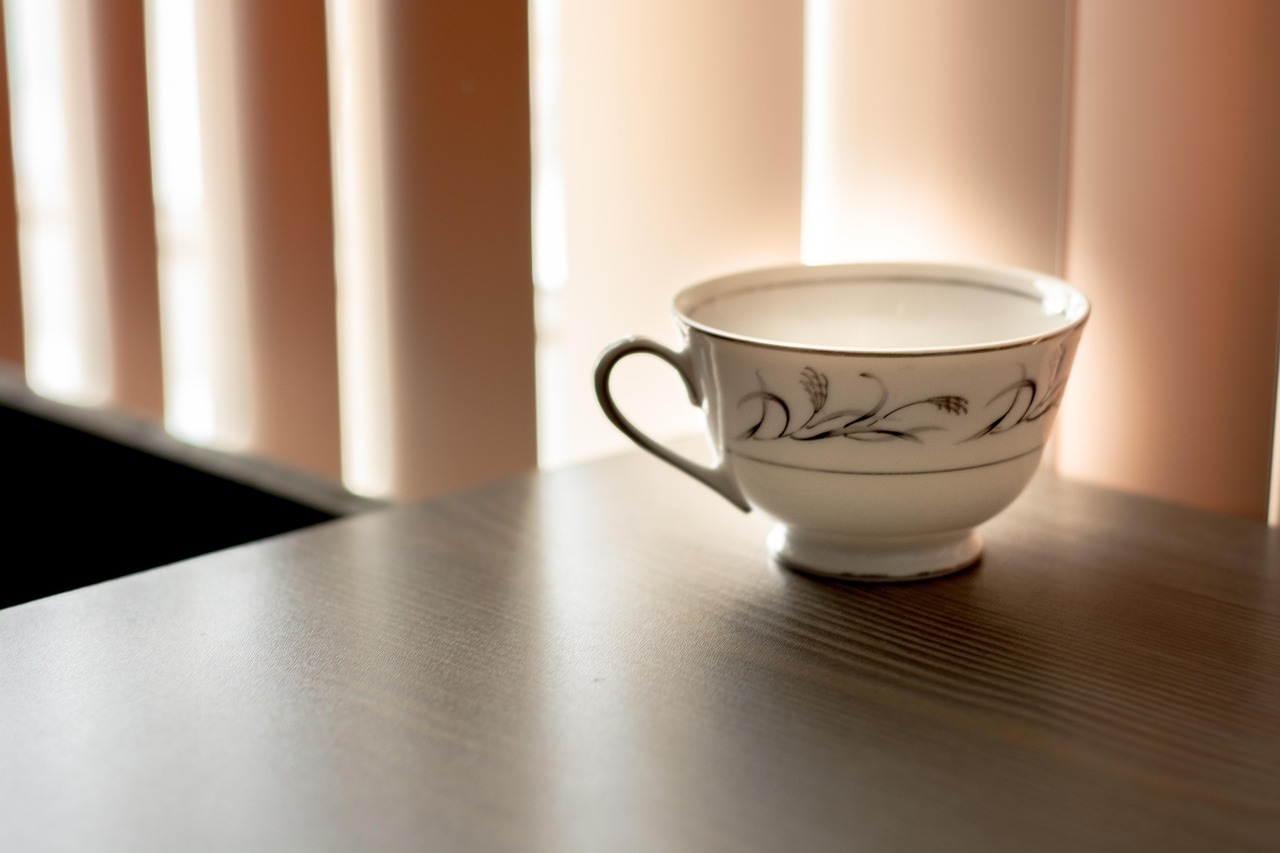
Each is a visual story told through balance, contrast, and emotion—hallmarks of expertly executed negative and positive space art.
Easy to Use Batch Image Enhancer for Win and Mac
Part 3. Practical Tips for Using Positive and Negative Space in Photography
Mastering the use of negative and positive space doesn't require expensive gear—it requires awareness and creative framing. These practical tips will help you elevate your negative space photography by using light, composition, and real-world environments to your advantage.
Use Light and Contrast Effectively
Lighting is your best tool to define and separate positive space from negative space. Side lighting or backlighting can carve out the subject, creating dramatic shadows that become part of your negative space composition. High-contrast lighting adds drama and clarity, while softer light creates subtle emotion.
In positive and negative space art examples, you'll notice how contrast—either in color or brightness—is used to emphasize boundaries and mood. Try emulating this in your photos.
For instance:
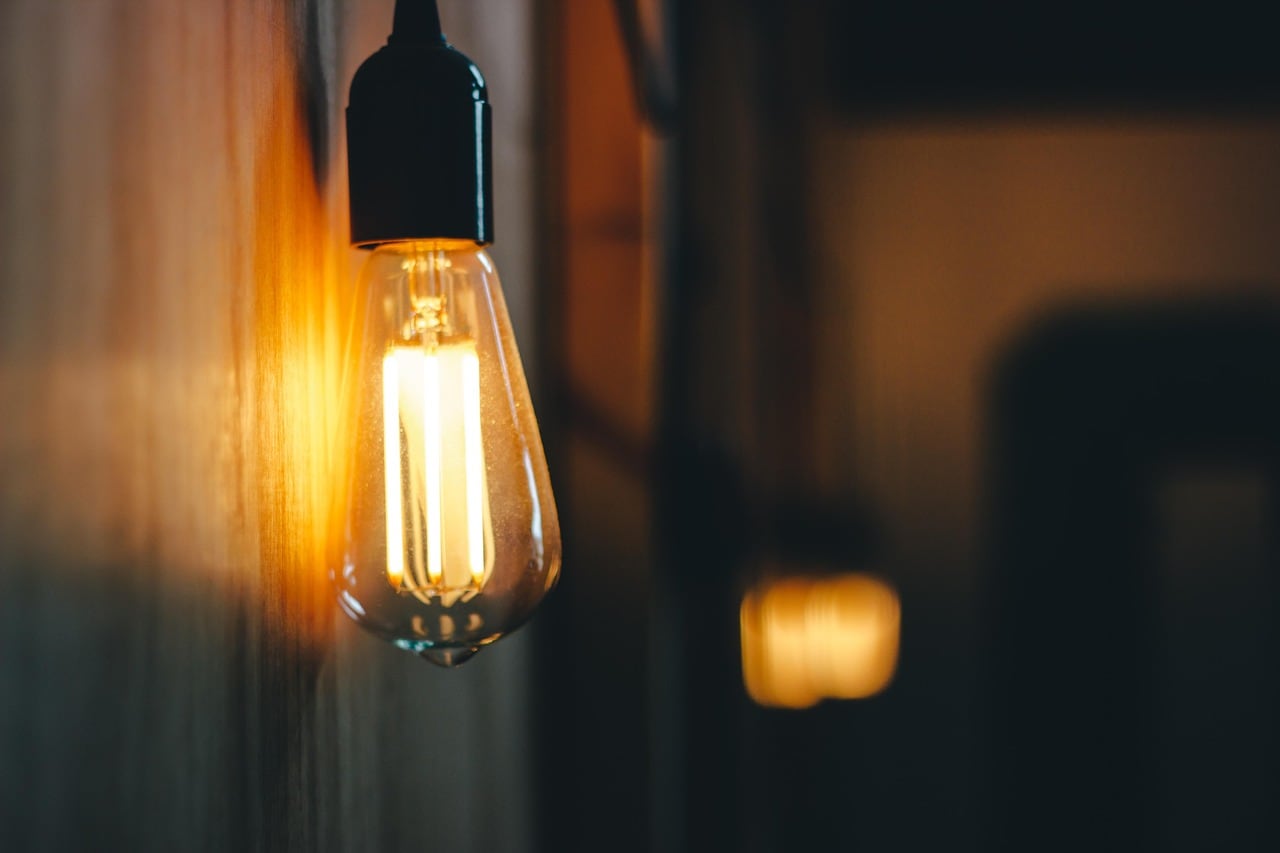
Both create stunning negative space photo opportunities.
Look for Natural Negative Space
Nature and urban environments are full of usable negative space—you just need to recognize them. Open skies, water bodies, empty fields, blank walls, or even fog can act as natural backdrops.
Some great real-life examples of negative space in photography include:

These types of negative space pictures can express solitude, stillness, and clarity with minimal effort.
Experiment with Composition Ratios
Composition matters greatly when working with positive and negative space design. A good starting point is using 60% negative space to 40% subject. This proportion is often emotionally balanced—offering room to breathe while keeping focus.
Want more drama or intimacy? Reduce negative space to tighten the frame. For peaceful or distant emotions, expand the negative space. This balance is essential in both positive negative design and positive and negative artwork.
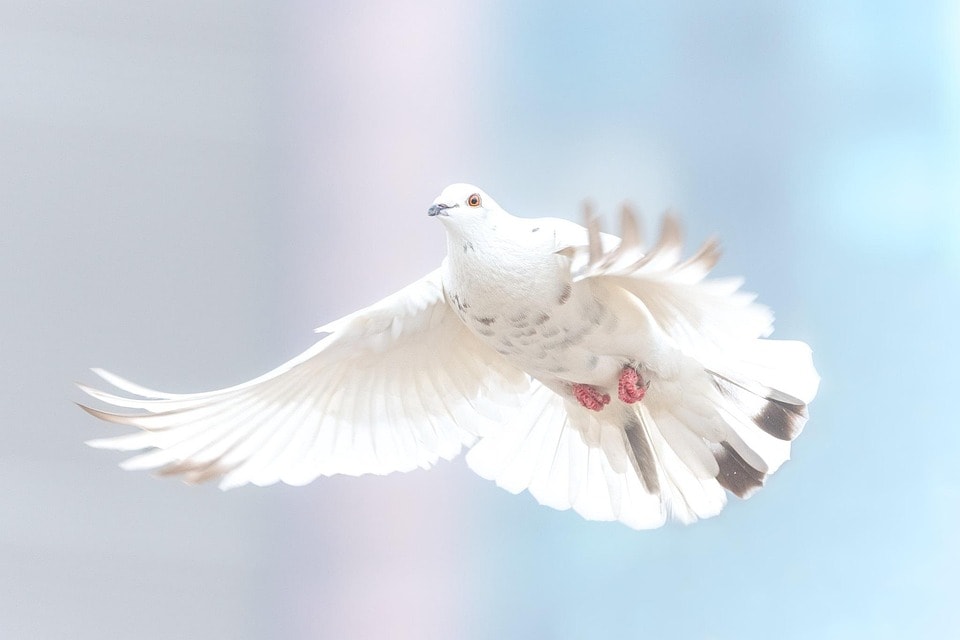
Use Shapes and Minimalism
Play with negative and positive shapes to create framing within the frame. A window, doorway, or tree arch can serve as negative space that surrounds and defines your subject. This adds depth and improves storytelling.
Minimalism is a proven strategy. A single object in a blank space is powerful in both positive space photography and positive and negative space drawing. Less truly is more when used intentionally.
By incorporating these techniques, your images will align with principles seen in both negative and positive space art and modern photography—giving your work emotional clarity and visual power.
Part 4. How to Sharpen and Upscale the Subject in Positive Space
One of the biggest challenges when working with negative and positive space in photography—especially in long-distance or minimalist compositions—is maintaining clarity in the positive space. Since these photos often feature the subject surrounded by large amounts of negative space, any blur or softness becomes much more apparent.
This is especially true in negative space photography, where open skies, shadows, or plain walls act as background. In such shots, the subject must be razor-sharp to stand out. Whether you're shooting a negative space portrait or minimalist positive and negative artwork, detail in the subject is essential.
Why Sharpness Matters in Space-Based Composition
In a typical negative space photo, the subject carries the visual and emotional weight. That’s why it must remain crisp. A blurry subject against a clean background can ruin the balance between negative and positive space and diminish the emotional impact.
For instance:
In positive space photography, a person’s eyes or the texture of clothing matters deeply.
In positive and negative space drawing, outlines define the subject.
Similarly, in digital photography, sharpness in the positive space ensures clarity of message.
Whether it’s positive negative artwork or a professional portrait, your subject needs to pop.
Use UniConverter’s AI Image Enhancer for Better Quality

Here’s how to upscale your images for sharper positive space detail:
Step 1: Launch Wondershare UniConverter and Navigate to AI Toolbox

Step 2: Upload Your Image
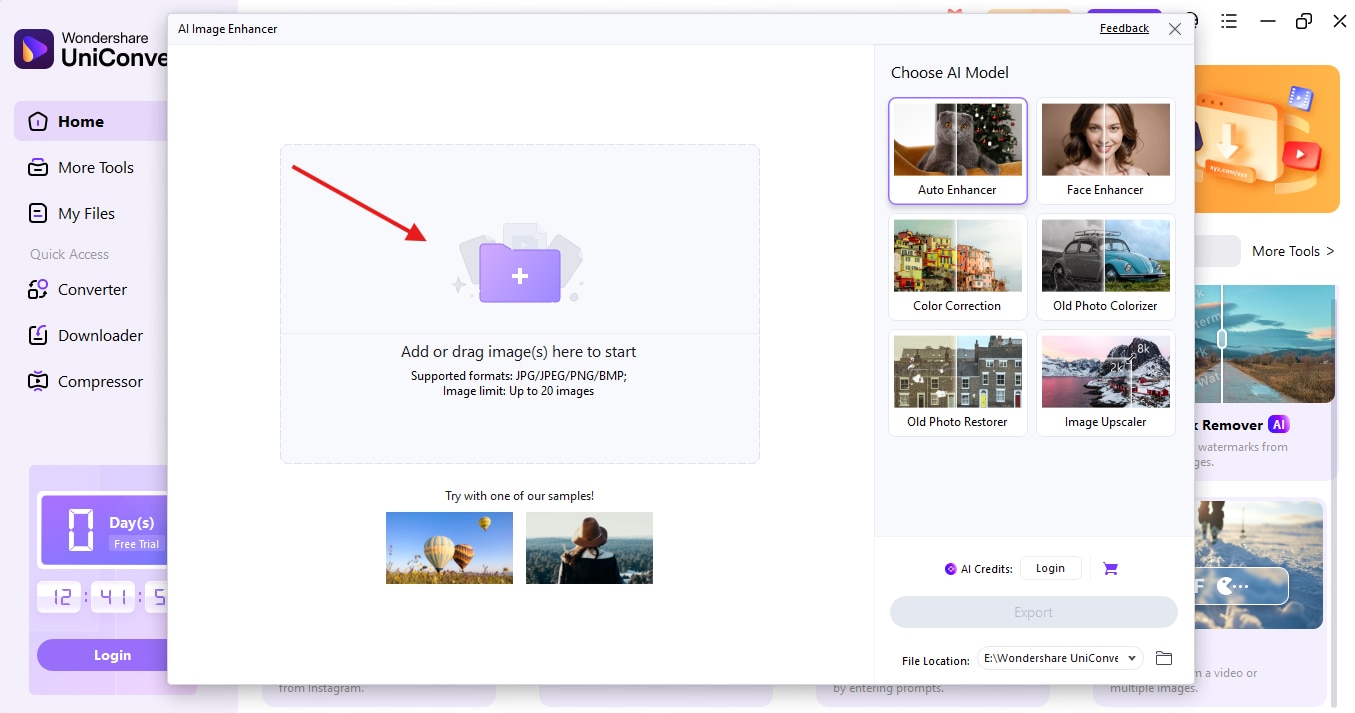
Step 3: Select AI Image Upscaler Tool
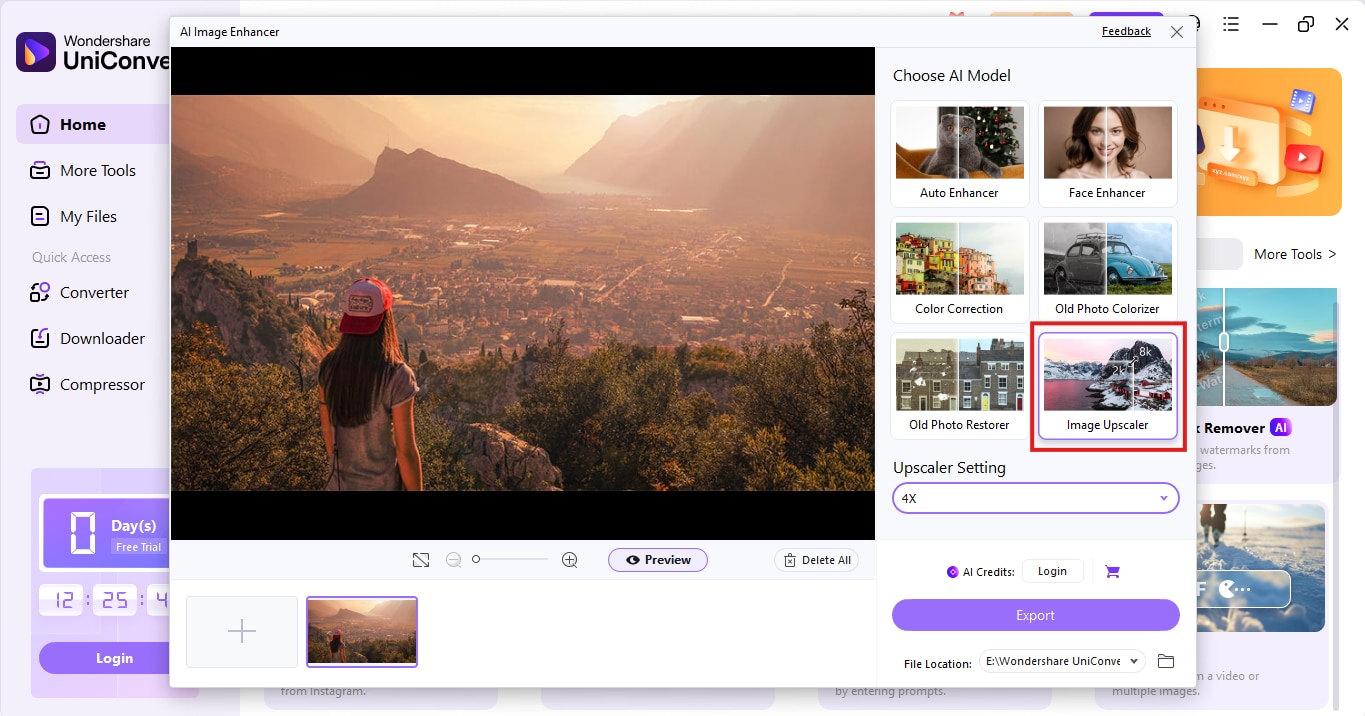
Step 4: Choose Upscale Level and Preview
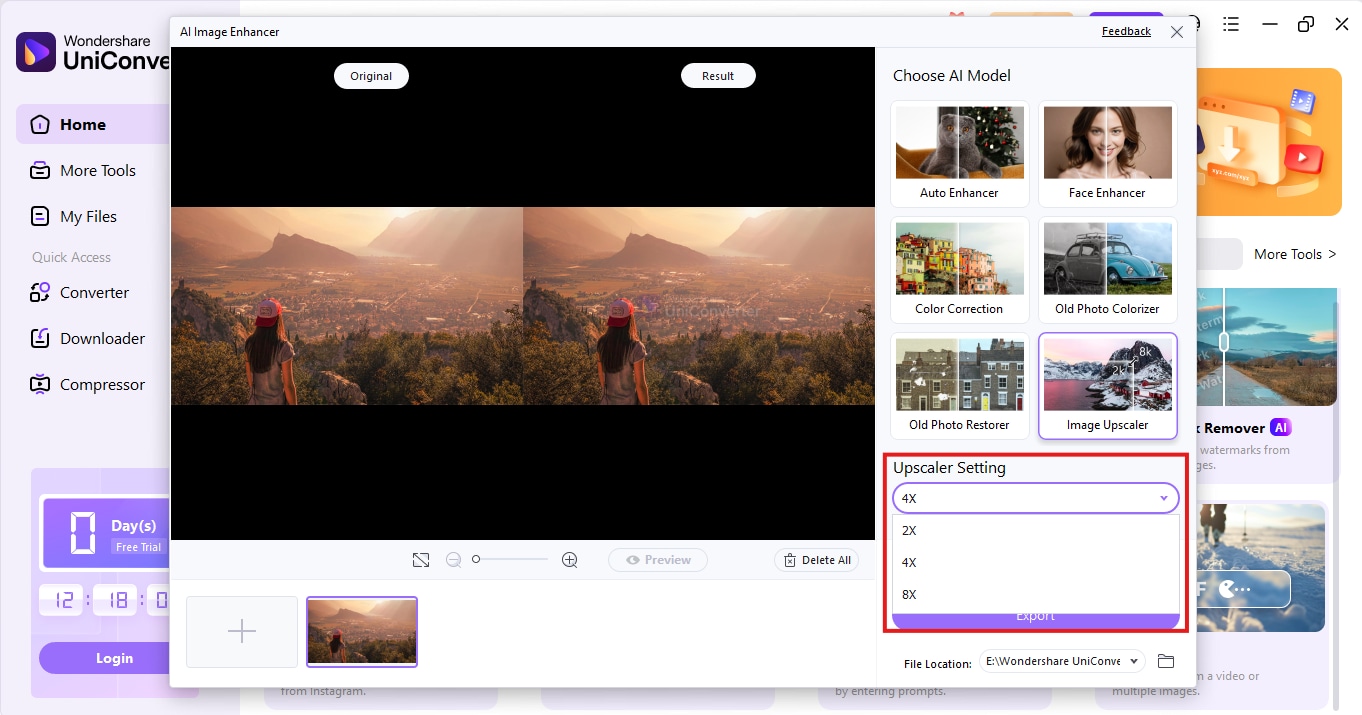
Step 5: Export the Final Upscaled Image

This process ensures your subject remains detailed, even when you're enlarging minimalist or distance compositions.
By using tools like UniConverter, you preserve the emotional impact and design precision that’s crucial in positive and negative space art, including professional-grade negative space pictures and editorial photography.
Conclusion
Mastering the use of negative and positive space in photography and art opens up creative and emotional depth. Whether crafting a minimal negative space photo, designing balanced positive and negative artwork, or composing a thoughtful negative space portrait, the interaction between subject and space is essential. It enhances mood, sharpens focus, and tells compelling visual stories. By understanding how to balance positive space photography with surrounding negative space, and using tools like UniConverter to maintain clarity, your compositions will stand out. Embrace both emptiness and presence—they work together to create powerful, memorable visuals.
Easy to Use Batch Image Enhancer for Win and Mac
FAQs
-
Q1. What is the difference between positive and negative space in photography?
Positive space is the main subject; negative space is the background or empty area around it. Both are equally important in composition. -
Q2. How can I use negative space to enhance a portrait?
Use surroundings like a sky, wall, or soft background. This draws the eye to the subject and creates a calm or thoughtful tone, perfect for a negative space portrait. -
Q3. What are good examples of natural negative space?
Skies, walls, water, fields, shadows, and even empty roads. These work well in negative space photography to isolate and emphasize your subject. -
Q4. How do I ensure my subject stays sharp when using a lot of negative space?
Use tools like UniConverter Image Upscaler to enhance clarity, especially for long-distance or minimal shots common in negative space pictures. -
Q5. Is negative space a beginner or advanced technique?
Both. It’s simple in concept, but its practical use in positive and negative space design requires practice and artistic intuition.



